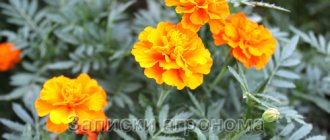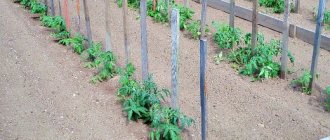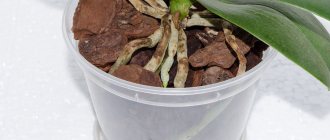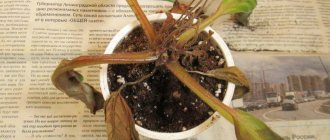Marigolds are a plant familiar to everyone, blooming beautifully in flower beds, ridges, and balconies, decorating flower beds with a colorful variety. But few people know that marigolds and tagets are the names of a crop from the Asteraceae family, originally from America, where it grows wild.
The plant is unpretentious, has a wide variety of varieties, looks great in compositions, group and single plantings, its care is simple - all this has made it popular among a huge variety of flower crops. Growing marigolds is not difficult even for a novice gardener, and more detailed information about the culture will tell you how to plant and when to plant in open ground.
Species diversity of marigolds
The plant, in addition to beautiful bright flowers, has an unusual tart odor, the source of which is phytoncides. Many insect pests cannot tolerate it, so marigolds are planted next to garden crops to repel them, and in the cuisines of southern peoples, tagets are used as a spicy spice. Varieties of marigolds vary in size and shape of flowers, leaves, and height, so when choosing planting material you need to take into account where the flower will be grown.
Kinds:
- Thin-leaved (Mexican) - grows up to 25 cm, strongly branches, leaves are dissected, thin, flowers are small - 1.5 cm in diameter. The color of the flowers is mainly yellow and orange. Ideal for borders, ridges, landscape compositions.
- Rejected (small-flowered, French) - forms a lush bush with flowers (double, simple, semi-double) of yellow-brown, yellow, brown-red color. The leaves are thin, dissected. The variation in height is quite large:
- up to 25cm – dwarf species;
- no higher than 40cm – short;
- up to 50cm – medium;
- 60cm – tall.
- Large-flowered (erect, African) - grows up to 1 m, the leaves are large, dissected, tubular flowers are always yellow in color. The bushes vary in height:
- up to 45cm – short;
- up to 60cm – medium height;
- no higher than 90cm – tall;
- more than 90cm – gigantic.
Varieties
There are more than 60 species of marigolds. But the most common three types are:
- erect;
- rejected;
- thin sheet.
In their homeland, these flowers are used not only as decoration, but also for medicinal purposes. One of the seasonings, Imeretian saffron, is also made from the leaves of this plant; they have a fragrant and spicy aroma.
Cut flowers stand in water for a long time. The green leaves are rich and velvety. Flowers can be:
- terry like carnations;
- semi-double;
- ordinary.
Erect African marigolds (Tagetes erecta)
Annual bushy plant. Can be compact or spreading. It has a main pronounced shoot that is higher than the others. The stems reach 1.2 m in height, they branch. The inflorescences of the basket can be 13 cm in diameter. This type comes in two-tone or single-color yellow. Beginning of flowering time: late June - early July.
French rejected (Taget es patula)
Annual plant. The stem is straight, branched, leaves have sharp tips, often fused together.
The size of the inflorescences is medium, their legs are thick. The beginning of flowering time is the second half of July.
Mexican thinleaf (Tagetes tenuifolia)
A low bush up to 40 cm, grows for one year. The leaves are not large, neither are the flowers.
The inflorescences are simple, planted on short stalks, color range: yellow or with orange accents.
Anise (Tagetes anisala)
The flowers and green shoots have the aroma and taste of tarragon. The plant is aromatic and can be smelled even from a long distance. The plant is unpretentious and drought-resistant, but heat-loving. It easily tolerates replanting even when blooming. Perfect for small flower beds and even with a limited amount of soil. The flowering period is all summer.
These are one of the most common marigolds. There are many more types and colors of them.
Requirements for the site and soil
The site for growing marigolds should be chosen in a sunny, well-lit place. But it should be taken into account that each variety of crop relates to lighting differently, for example, white-flowered varieties (erect hybrids) need light shading in extreme heat, and varieties with thin stems and openwork leaves (thin-leaved) shade is contraindicated - they grow weak and frail .
The crop has no special preferences for soil composition, you just need to know that the root system does not like stagnant moisture and take this into account when planting - heavy soils can be lightened by adding sand.
Preparations for planting begin in the fall - they dig up the area with the addition of humus or compost (4-5 kg per 1 m²), remove weeds and plant roots. To prevent possible stagnation of moisture, you can dig small grooves to drain melt water in the spring.
Marigolds – photo
It just seems that marigolds have long become boring and familiar. Even they can be amazingly varied. Look!
Photo: svoisemena.ru
Photo: 7dach.ru
Photo: evergreen-pnk.ru
Photo: nakhodka.vsesorta.ru
Photo: domashniecvety.ru
Photo: 7dach.ru
Photo: zen.yandex.by
Photo: vsevdom.net
Photo: treespk.ru
Photo: domashniy-comfort.ru
Photo: oir.mobi
Photo: flora-dekor.ru
Photo: 7dach.ru
Photo: shop.zelmir.by
Photo: oir.mobi
Photo: 7dach.ru
Photo: 7dach.ru
Photo: fotoload.ru
Photo: seedspost.ru
Photo: pohlmans.com.au
Photo: vk.com
Photo: 7dach.ru
Photo: oir.mobi
Photo: agroportal.rs
Did you like the post? Subscribe to our channel in Yandex.Zen, it really helps us in our development!
Growing marigolds in seedlings
It is difficult to confuse marigold seeds with others - they are long, like thin sticks, with a yellow or beige tuft. They germinate within 2-3 years, but the germination time of the species is different:
- hybrids and erect – 10-12 days;
- hybrids and rejected – 10-18 days;
- hybrids and thin-leaved – 12-18 days.
Seed preparation
Seed germination for any sowing method can be accelerated by treating with a 0.001% solution of heteroauxin or Epin (growth stimulants), keeping it in it for 6-12 hours. This treatment allows you to get seedlings 5-7 days earlier and helps the rapid development of a lush bush and beautiful flowers.
If marigold seeds are planted in open ground, and the spring weather is damp with low temperatures, then it is better not to soak to avoid rotting of the seeds. In this case, they should be sown dry - they will sprout under the prevailing conditions that are favorable to them.
When and how to plant
When to plant seeds for seedlings largely determines the type of plant. Erect and thin-leaved marigolds bloom either in mid-July or early August, so for seedlings, for early flowering, their seeds are sown in early spring - before March 10, and they will begin to bloom in mid-May or the first ten days of June.
Rejected marigolds bloom earlier - mid-June, and sowing seeds in the last days of March will allow them to begin flowering in the third decade of May.
Also, the timing of sowing seeds should be correlated with the climate - young seedling bushes will not tolerate spring frosts after transplanting into the ground, and too mature bushes do not take root well.
Sowing rules:
- pour a layer of expanded clay or crushed stone into a container;
- mix purchased soil, peat, sand, humus in a ratio of 1:1:1:1 or turf soil, humus, sand (3:2:1) and fill the container for planting;
- spread the seeds into moistened grooves 1 cm deep every 4-5 cm, sprinkle with soil mixture;
- cover the containers with film (glass) and place in an unlit place at a temperature of 20°-22°C;
- after germination, the film must be removed and the boxes moved to a bright place with a lower temperature - 17°-18°C;
- If the weather permits, the seedlings are taken out to the balcony, loggia, or veranda for hardening.
Seedling care
Watering is carried out abundantly and infrequently, preventing moisture from stagnating.
Feeding begins 1-2 weeks after germination - green Crystalon is added with the nutrients necessary during this period. In the next feeding (5-6 days before transplanting into the ground), yellow Crystalon is used - it activates root growth and promotes rapid rooting.
Planting seedlings in open ground
The timing of transplanting seedlings into open ground depends on weather conditions. It is allowed to plant young bushes when constant positive day and night temperatures are established. When there is a threat of frost, plantings are covered in any convenient way.
The distance between bushes depends on the type of planting: single, group, in composition. For example, tall varieties can be planted at intervals of 40-50cm in borders or along the edge of the lawn; in compositions they can be planted at the vertices of a triangle with a side of 40-45cm.
Between bushes of medium height a distance of 30-35 cm is maintained, between low bushes (dwarf species) - 20-25 cm.
Description
Bright, fragrant, surprisingly attractive in their diversity, marigolds belong to the Astrov family. Despite their “American” origin, the flowers are popular among gardeners around the world. They are used for landscaping large and small cities in Russia.
In the vast expanses of Central and South America, even today you can find wild specimens of herbaceous plants.
Over three dozen species of marigolds are known. The flower has a Latin name - Tagetes. Among the common people there is the name Chernobrivtsy.
The characteristic features of the plant are:
- straight or branched strong stems;
- bush height, depending on the variety, 20-100 cm;
- leaves are green, dark in color;
- the color of the inflorescences, which can be single or complex, is bright, yellow, red, brown or variegated;
- The flowering period is from June to September-October, depending on the region and the time of frost.
The main characteristic of the varieties is the structure of the inflorescences:
Terry marigolds, variety “Terry giant”
- Dianthus;
- chrysanthemum-shaped;
- terry;
- semi-double;
- simple.
Chernobrivts are characterized by unpretentiousness, rapid growth, and a positive response to the abundance of light and heat. Young plants grow well at 18-20 °C. When the temperature drops by 8-10 °C, flower growth stops, and when it freezes to -2 °C, they die.
Growing seeds in open ground
Marigold seeds germinate well in the spring when sown in open ground directly at the place of cultivation. You need to wait for the soil to thaw and warm up, and sow in the 2-3rd decade of April or in the 1st decade of May. If the soil is not warmed up well, the seeds may lie in the ground for a long time and lose their germination.
The rules for planting seeds are the same as for planting seedlings. If there is a lot of seed material, you can sow more densely, and then thin out the plants, using the removed bushes as seedlings.
When to plant marigold seedlings in 2022 according to the lunar calendar
The lunar calendar will help you figure out what dates to plant seeds in order to get strong and healthy seedlings.
| Month | Better days | Month | Better days |
| January | 23-27 | April | 3-7, 12-15, 21, 22 |
| February | 4-14, 17-23 | May | 2-5, 12-14, 18-25 |
| March | 3-16, 20-21 | June | 1-3, 6-13 |
In 2022, unfavorable days fall on the following dates:
- January – 2, 3, 17, 18
- February – 1, 2, 16, 28
- March – 1, 2, 18, 27, 28
- April – 1, 2, 16, 23
- May – 1, 16, 30
- June -14, 18, 29
- July – 13, 14, 28, 29
- August – 11, 12, 27-28
- September: 9-10, 26, 27
- October: 9, 10, 25, 26
- November: 1, 2, 7-9, 24, 25, 28, 29
- December: 7-9, 23-25
Care of plantings in open ground
The culture is unpretentious and does not require special care, different from other flower crops: watering, weeding, loosening, fertilizing.
Watering requirements
Any variety of tagets looks attractive and beautiful with timely watering. In case of infrequent precipitation, watering is carried out every 7-10 days, trying not to pour water on the flowers and pouring 8-10 liters per 1 m².
Reference! The plant may lose its decorative appearance with infrequent watering and drying out of the soil, but has the ability to quickly recover with regular watering.
Fertilizing
If fertilizers were applied during the autumn digging of the soil, 2-3 fertilizing is carried out during the season.
The first time the planted plants are fed at the very beginning of flowering with complex fertilizers without nitrogen or with a minimum amount of it, so as not to stimulate excessive growth of green mass. Fertilizing with Agricola and Kristalon gives good results.
Spraying with Humate in solution every 10-14 days helps to strengthen the plant, abundant and long flowering.
In case of iron deficiency, when the leaf becomes lighter but the veins remain green (chlorosis disease), use Ferovit or Agricola “For yellowing of leaves.”
Pest control measures
Marigolds are practically not exposed to pest invasion due to the presence of phytoncides in the composition, but sometimes, due to a combination of unfavorable factors, they can suffer due to spider mites, aphids, slugs or the infectious disease gray rot.
How to fight:
- Aphids suck the juices out of the plant, and it gradually dies due to lack of nutrients. Insecticide preparations Konfidor, Bi-58, Aktara or tobacco infusion will help: tobacco (200g) is infused in hot water (5l) for 2 days, stirring occasionally. The infusion is boiled, allowed to cool, and after straining, 20 g of crushed soap is dissolved in it, adding 5 liters of water. Spray the entire bush. This remedy also helps against other insects (thrips, caterpillars, bedbugs).
- Spider mites appear when there is a lack of moisture and irregular watering, so prevention is regular watering and humidification of the air from a spray bottle (indoors). Spraying with infusion of tobacco dust, treatment with Fitoverm or preparations containing sulfur helps.
- Slugs damage plantings when the soil is very wet in wet, rainy weather. A tincture of tobacco (recipe above) and wormwood will help save the plants: dry crushed wormwood (200g) is infused in 5 liters of water for a day, the infusion is boiled for 30 minutes, filtered, the volume is brought to 10 liters and used for spraying.
- Gray rot is observed during prolonged rains and cool weather. The preparations Fundazol, Arcerid, Bordeaux mixture (1%) cope with the infection when spraying and watering the soil around the marigold bushes.
Benefits of the plant
Marigolds have great medicinal value. They contain carotene, lutein, vitamin B9, C, calcium, phosphorus, magnesium, potassium, iron and selenium. All this helps fight cataracts, diabetes, pancreatic diseases, bronchitis and colds, etc.
In a culture of healthy eating, dried and ground marigold flowers are used in spices such as hops-suneli and are called Imeretian saffron (read about the differences between saffron and marigolds here). Their consumption helps normalize digestion and strengthen the immune system.
The entire plant exudes a characteristic spicy aroma, which is due to the content of essential oils in the inflorescences and other parts of marigolds. Appropriate products containing these oils calm the nervous system and have a beneficial effect on people with mental disorders.
Chernobrivtsi have become famous for their aroma not only in cooking and medicine, but also bring considerable benefits in the garden. Planted in close proximity to other plants, they protect them from nematodes, aphids and other insects that cannot tolerate the aroma of marigolds. By driving away pests, marigolds attract bees, which pollinate neighboring crops , thereby ensuring high yields.
You can read more about the medicinal properties of marigolds here, and here we talked about the use of marigolds.
How to collect seeds
Marigolds bloom for a long time and to support them during this period, to activate the formation of new buds, faded inflorescences must be removed, leaving a small amount for the seeds to ripen. All varieties of marigolds, except hybrids, are perfectly grown from independently prepared seeds.
Reference! Hybrids do not retain varietal characteristics when grown from home seeds.
You can collect seed material in August, when the seed pods are dry. They are torn off on a dry sunny day and laid out to dry completely. Dried seeds are easily removed from the box. Each variety is placed in a separate paper envelope and signed.











